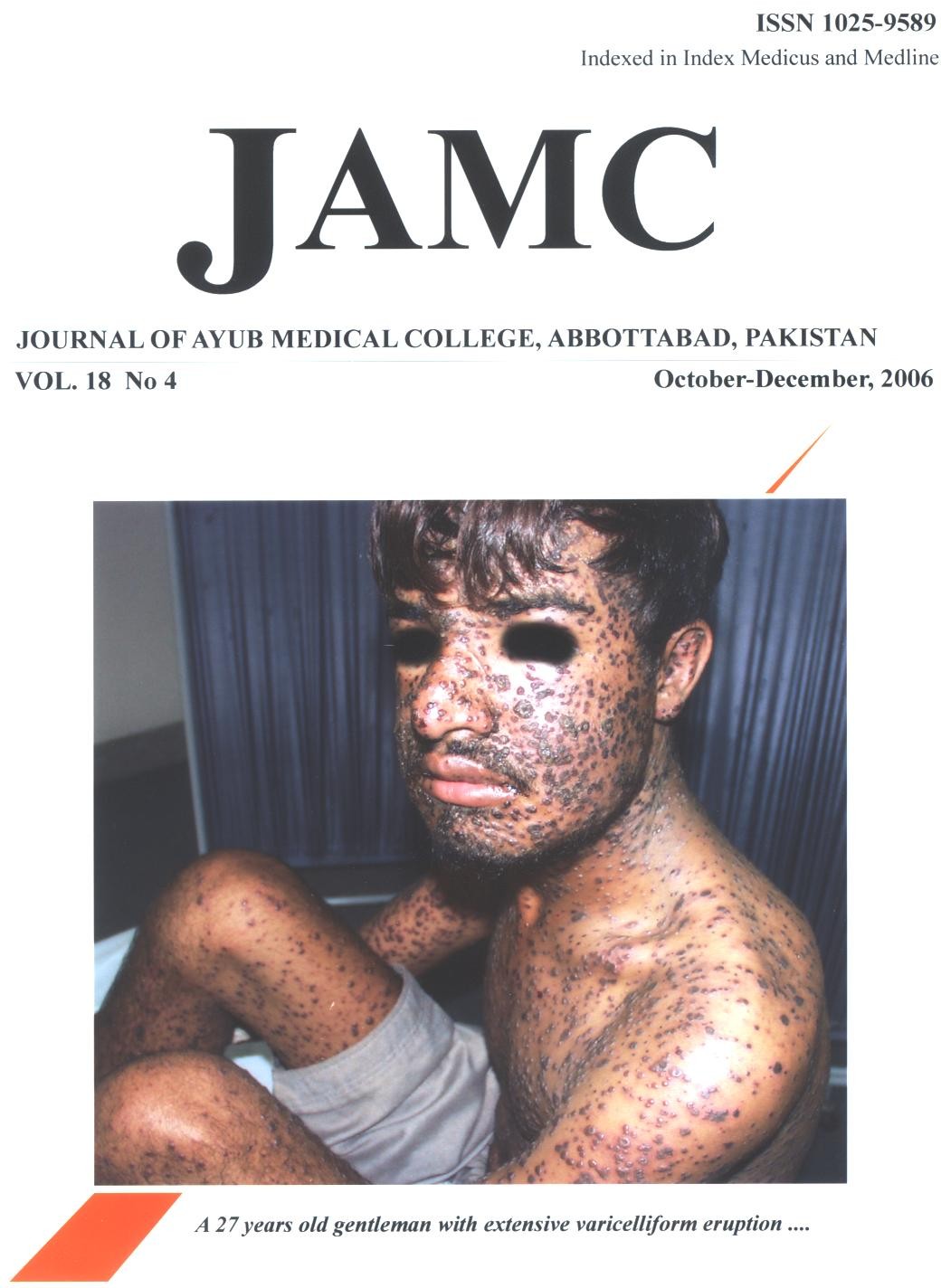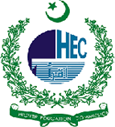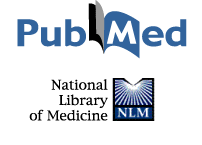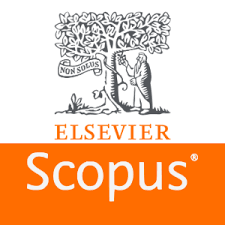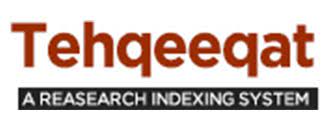EVALUATION OF AETIOLOGY AND EFFICACY OF MANAGEMENT PROTOCOL OF EPISTAXIS
Abstract
Background: Epistaxis is one of the commonest medical emergencies. It affects all age groupsand both sexes. The cause may be local or systemic but in majority it is spontaneous and
idiopathic. Trauma is considered to be a major aetiological factor. Various treatment protocols are
utilized to control epistaxis derpending upon the type, severity and cause of bleeding. Methods:
This descriptive study was designed to evaluate the aetiology and efficacy of management
protocol of epistaxis in a tertiary care setting. 313 patients underwent prospective evaluation by
consultant and non-consultant doctors with considerable experience in Ear, Nose & Throat (ENT)
emergencies management. Standard principles were followed in the management. Results: This
study demonstrated a bimodal distribution with incidence peaks in below 25 years & above 50
years of age. Males were affected twice more than the females (2.15:1.04). Anterior nasal bleeding
was noted in majority of the patients. Anterior nasal packing was the most effective method of
controlling anterior epistaxis. While posterior bleeding was controlled by posterior nasal packing
with Foley's catheter. The most common cause was found to be trauma, followed by hypertension.
Conclusion: It may be concluded from this study that epistaxis is the m ost common ENT
emergency, affecting all age groups. It has a bimodal age presentation and affects males twice
more than females. Anterior bleeding is more common than posterior bleeding. Epistaxis may be
controlled with chemical/electro-cautery if the bleeding point is visible. In case of failure to
localize or access a bleeding point or profuse bleeding, anterior nasal packing can effectively
control majority of epistaxis. Foley's catheter is a good option that can be used for posterior nasal
packing. Gelfoam may be used for controlling epistaxis in cases of bleeding disorders, when there
is mucosal ooze.
Key words: Epistaxis, Nasal packing, Foley's catheter.
References
Bradley F. Marple. Epistaxis. Practical Pediatric
Otolaryngology. Robit T. Cotton, Charles M. Myer (Eds).
Lippincott-Raven. 1999; 427-448.
Maqbool M, Ahmad I, Hameed A. Trauma: the most common
cause of epistaxis in children and young adults. Pakistan
Postgrad Med J 2000; 11(4):127-8.
Hanif M, Rizwan M, Rabbani MZ, Chaudhry MA. Common
causes of Epistaxis-A Two years Experience at Rawalpindi
General Hospital. J Surg Pakistan 2001; 6(2):2 -3.
Shaheen OH. Epistaxis in Scott Brown's Otolaryngology.5th
edn, vol 4, I.S. Mackay and T.R.Bull (eds), Butterworths
London 1987: 272-282.
Viehweg TL, Roberson JB, Hudson JW. Epistaxis: diagnosis
and t reatment. J Oral Maxillofac Surg 2006;64(3):511-8.
Kucik CJ, Clenney T. Management of epistaxis.
Am Fam Physician 2005;71(2):305-11
Mann GS, Philip R, Balachandran A. Intractable epistaxis
secondary to a post traumatic pseudoaneurysm. Med J Malaysia
;60(3):367-9.
Kucik CJ, Clenney T. Management of epsistaxis. Summary for
patients. Am Fam Physician 2005; 71(2):312.
Chaiyasate S, Roongrotwattanasiri K, Fooanan S, Sumitsawan
Y. Epistaxis in Chiang Mai University Hospital. J Med Assoc
Thai 2005;88(9):1282-6.
Awan MS, Ali MM, Hussain T, Mian MY. Management of
pediatrics Epistaxis; A prospective study of 100 cases.
Professional Med J 2001; 8(2):226-65.
Lee HM, Kang HJ, Lee SH. Metastatic renal cell carcinoma
presenting as epistaxis. Eur Arch Otorhinolaryngol 2005;
(1):69-71.
Nawaz G, Khan MR. Primary sinonasal tuberculosis in NorthWest Pakistan. J Coll Physicians Surg Pak 2004;14 (4):221-4.
Raza SN, Shabbir SMA, Haq A. Leech infestation and its
association with water drinking habits. J Coll Physicians Surg
Pak 2006;16(3):175-8.
Ahmed I, Raza SN, Bashir T, Arshad M. Pediatric Epistaxis.
Pakistan Postgrad Med J 2000;11(3):106-8.
Link TR, Conley SF,Flanary V, Kerschner JE. Bilateral
epistaxis in children: efficacy of bilateral septal cauterization
with silver nitrate. Int J Pediatr Otorhinolaryngol 2006;70(8):
-42.
Badran K, Arya AK. An innovative method of nasal chemical
cautery in active anterior epistaxis. J Laryngol Otol 2005;
(9):729-30.
Feusi B, Holzmann D, Steurer J. Posterior epistaxis: systematic
review on the effectiveness o f surgical therapies. Rhinology
;43(4):300-4.
Sadri M , Midwinter K, Ahmed A, Parker A. Assessment of
safety and efficacy of arterial embolization in the management
of intractable epistaxis. Eur Arch Otorhinolaryngol 2006;
(6): 560-6.
Mahadevia AA, Murphy KJ, Obray R, Gailloud P.
Embolization for intractable epistaxis. Tech Vasc Interv Radiol
; 8(3):134-8.
Bedogni A, McCombe D, Kennedy J, Morrison W. Resurfacing
the nasomaxillary cavity for management of epistaxis in OslerRendu-Weber disease. Br J Plast Surg 2005; 6.
Abbas N, Hussain I, Amjad M, Akhtar FP. Aetiological
incidence of Epistaxis in various Age Groups and Sex at Mayo
Hospital, Lahore. Ann King Edward Med Coll1998;4(4):18-9
Almeida GS, Diogenes CA, Pinheiro SD. Nasal endoscopy and
localization of the bleeding source in epistaxis: last decade's
revolution. Rev Bras Otorrinolaringol (Engl Ed) 2005;
(2):146-8.
Ali S, Mumtaz S, Saeed M. Epistaxis: Etiology and
management. Ann King Edward Med Coll 2003;9(4):272-4.
Badran K, Malik TH, Belloso A, Timms MS. Randomized
controlled trial comparing Merocel and RapidRhino packing in
the management of anterior epistaxis. Clin Otolaryngol 2005;
(4):333-7.
Brain D. The nasal septum. Scott Brown's Otolaryngology,
Rhinology 6th edn. Alan G. Kerr, Ian S. Mackay, T.R. Bull
(Eds). Butterworth 1997: 4/11/19.
Shah AG, Stachler RJ, Krouse JH. Endoscopic ligation of the
sphenopalatine artery as a primary management of severe
posterior epistaxis in patients with coagulopathy. Ear Nose
Throat J 2005;84(5):296-7,306.
Umapathy N, Quadri A, Skinner DW. Persistent epistaxis: what
is the best practice? Rhinology 2005;43(4):305-8.
Andersen PJ, Kjeldsen AD, Nepper-Rasmussen J. Selective
embolization in the treatment of intractable epistaxis. Acta
Otolaryngol 2005;125(3):293-7.
Daniel M, Raghavan U. Relation between epistaxis, external
nasal deformity, and septal deviation following nasal trauma.
Emerg Med J 2005;22(11):778-9.
Ahmed M, Amjed M, Hameed A. Control of Epistaxis in a
Teaching Hospital. Ann King Edward Med Coll 1997;3(4):88-
Downloads
How to Cite
Issue
Section
License
Journal of Ayub Medical College, Abbottabad is an OPEN ACCESS JOURNAL which means that all content is FREELY available without charge to all users whether registered with the journal or not. The work published by J Ayub Med Coll Abbottabad is licensed and distributed under the creative commons License CC BY ND Attribution-NoDerivs. Material printed in this journal is OPEN to access, and are FREE for use in academic and research work with proper citation. J Ayub Med Coll Abbottabad accepts only original material for publication with the understanding that except for abstracts, no part of the data has been published or will be submitted for publication elsewhere before appearing in J Ayub Med Coll Abbottabad. The Editorial Board of J Ayub Med Coll Abbottabad makes every effort to ensure the accuracy and authenticity of material printed in J Ayub Med Coll Abbottabad. However, conclusions and statements expressed are views of the authors and do not reflect the opinion/policy of J Ayub Med Coll Abbottabad or the Editorial Board.
USERS are allowed to read, download, copy, distribute, print, search, or link to the full texts of the articles, or use them for any other lawful purpose, without asking prior permission from the publisher or the author. This is in accordance with the BOAI definition of open access.
AUTHORS retain the rights of free downloading/unlimited e-print of full text and sharing/disseminating the article without any restriction, by any means including twitter, scholarly collaboration networks such as ResearchGate, Academia.eu, and social media sites such as Twitter, LinkedIn, Google Scholar and any other professional or academic networking site.

